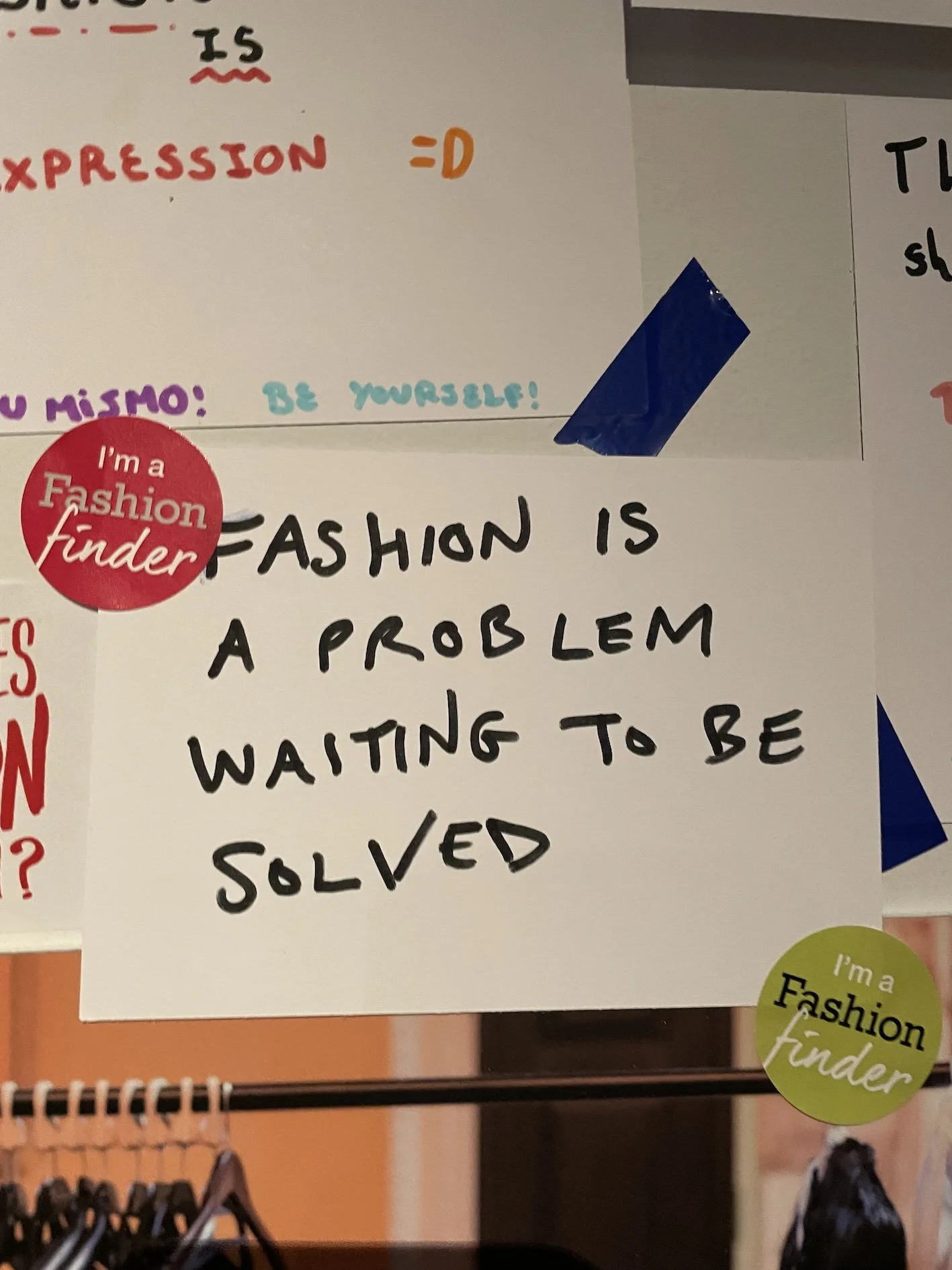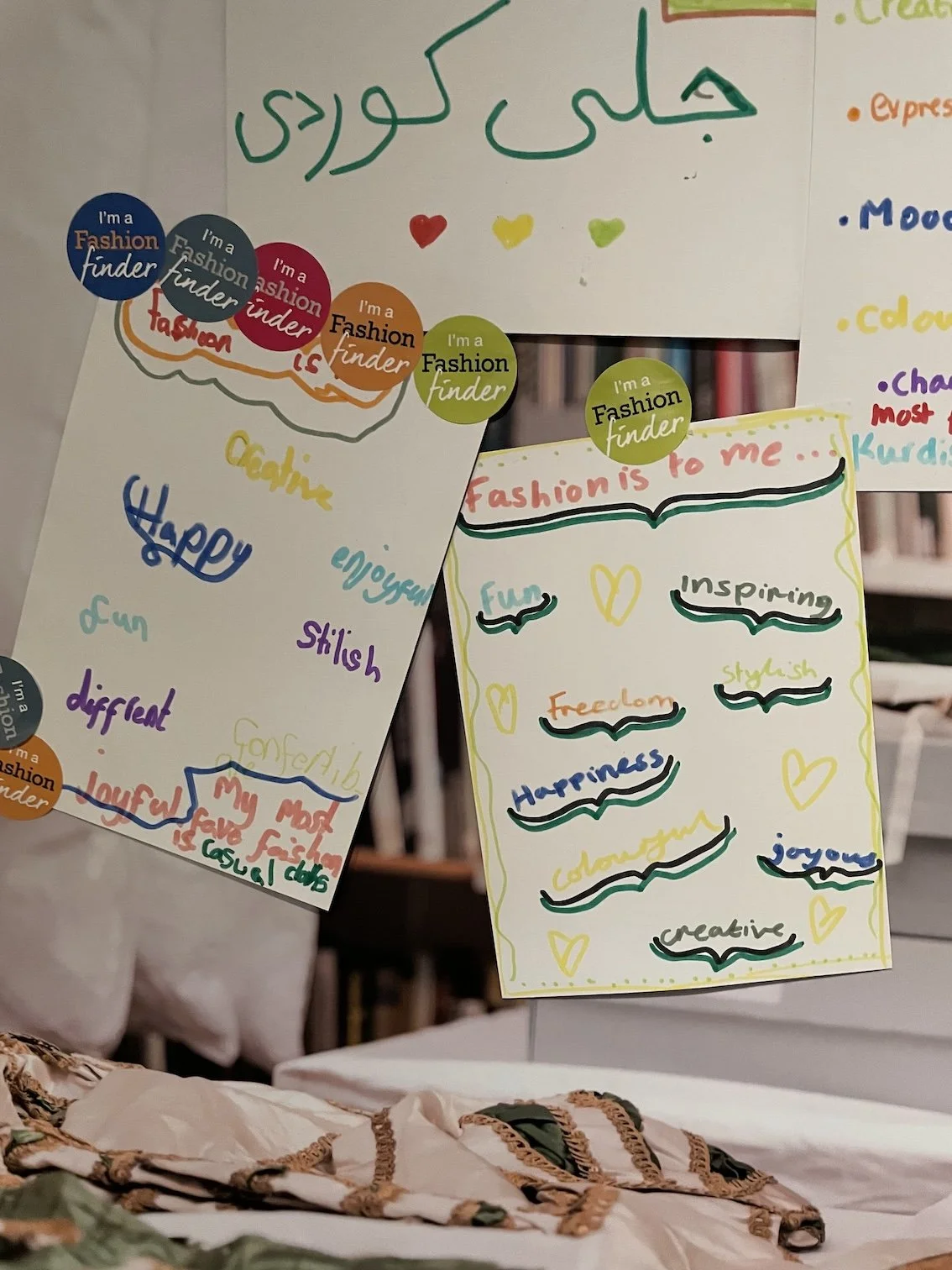Complete this sentence: The future of fashion will be…
Welcome to Series 10 of Wardrobe Crisis! We're kicking off with a conversation about the future of fashion, recorded live earlier this year when Wear Next came out in the UK.
Clare is in conversation Tamara Cincik, Professor of Fashion & Sustainability at Bath Spa University, at the first ever event of the UK's new National Centre for Sustainable Fashion, which is based there. A robust discussion beginning with regenerative fashion, and swooping energetically through slowing down fast fashion and what’s the point of fashion week to fibre sovereignty, the creative wellbeing economy, fashion burnout and mental health. We also talk about representation and inclusion, and ask: who gets to make the policy decisions that shape fashion's future?
P.S. Intrigued by Clare’s reference to the State of Fashion Biennale in Arnhem? Tune in next week for more.
NOTES
ABOUT TAMARA Tamara Cincik is Professor of Fashion & Sustainability at Bath Spa University, UK. She has over 20 years’ experience working in the fashion industry as a fashion editor, brand consultant and in the Houses of Parliament. In 2017, Tamara launched Fashion Roundtable, the only think tank for the fashion and textiles industry, which serves as the secretariat for the All-Party Parliamentary Group for Ethics and Sustainability in Fashion and acts as the bridge between fashion and policy. Professor Cincik is a Commissioner for the UK Trade and Business Commission and has led on a several reports including Cleaning Up Fashion, and Representation and Inclusion in the Fashion Industry. She also regularly hosts roundtables and events and is asked to speak at leading events, nationally and globally.
Read about FRT at Parliament here.
BATH SPA UNIVERSITY in collaboration with the city’s FASHION MUSEUM has launched a new NATIONAL CENTRE FOR FASHION & SUSTAINABILITY - “a space where leading thinkers, learners, businesses and communities will connect and drive the fashion and textile industry toward new, regenerative practices that will be healthy for people and the planet.”
The exhibition Clare mentions at the Fashion Museum was YOU CHOOSE, curated by local residents, including a group of Fashion Design students from Bath Spa University, and children from Oldfield Park Junior School. Discover here.
Photo by Clare, from the community room at the You Choose exhibition.
REGENERATIVE is a buzz word in sustainable fashion. According to Safia Minney (who’s written a book about it), “Regenerative fashion offers new ways of doing fashion. It has a basis not only in regenerative agriculture but also in systemic thinking that allows companies to operate as part of a wider ‘ecosystem’.”
In a guest post for the Fashion Revolution blog, Ismay Mummery describes “Regenerative agriculture or agroecology is about working in harmony with nature using Indigenous ecological knowledge. It utilises various techniques such as crop rotation, low to no tilling, cover crops and intercropping and natural compost. These all help to draw down carbon, enhance biodiversity, enrich the soil and improve water systems. It is an ancient, nature-based solution to climate change and helps land that has become degraded to regenerate and flourish.”
MONOCROPS are pretty much the opposite. For more on farming, check out eps 190 with Sarah Langford and 116 with Phillip Lymbery.
Watch the SHOWSTUDIO LFW PANEL here:
CREATIVE WELLBEING ECONOMY says Fashion Roundtable “places people and planet in an interwoven symbiotic relationship: revaluing locality, creativity, and enhancing accessibility to transformative tools and opportunities as links in a newly formed chain of opportunity from cradle to grave. The Creative Wellbeing Economy places value in people thriving above them simply surviving.” READ THE REPORT here.
BURNING BRITISH WOOL Yes, some farmers have burned their fleeces rather than sell them for a pittance, in protest at falling prices…
“Most farmers sell their fleeces through British Wool but some have said the price paid meant it was simply not a viable option. Over the years, the use of mass-produced synthetic fibres has caused a decline in the use of wool in clothing, with Covid-19 worsening the situation.” Via BBC
The book Clare recommends in the intro is PHOSPHORESCENCE by Julia Baird.
You can find Wear Next here.
THANK YOU FOR LISTNENING TO WARDROBE CRISIS - PLEASE HELP US SPREAD THE WORD ABOUT SERIES 10!






